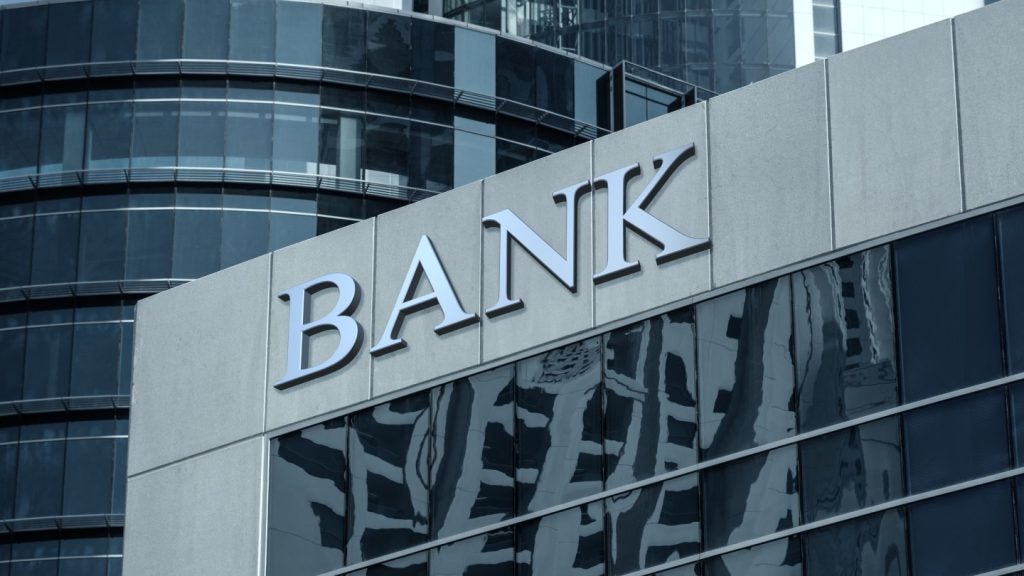been unable to avoid the global financial crunch. In their domestic
market, new regulations for 2009 could also have a big impact on
retail banking profitability, with rules to make account switching
easier, products transferable and banking fees more transparent.
Dan Jones
reports.
 The retail banking landscape
The retail banking landscape
in France is in the process of irrevocable change, brought about by
a combination of industry M&A and new regulatory requirements
in the wake of the global financial turmoil.
And whereas 2008 saw depositors retreat to the
relative safety of France’s huge savings institutions, 2009 is
likely to be a year of relative stasis, despite a broad range of
retail banking initiatives being planned by both the country’s
commercial and state-owned banks.
La Banque Postale, for example, the
12,000-branch-strong bank of the French post office, is looking to
build on solid deposit inflows enjoyed in 2008 by expanding its
range of retail banking services. The bank says it is planning to
introduce “a new type of retail banking” in France, reflective of
consumers’ changing consumption habits, as well as improving its
mass affluent, small business and insurance offerings.
But despite such measures from the likes of La
Banque Postale, some commentators suggest that bold retail
strategies will be rare in the current market. “I do not think that
the priority for French retail banks right now is to be
particularly aggressive. Rather, everyone is trying to retain their
existing market share and not lose customers,” Christophe Nijdam,
an analyst at financial research firm AlphaValue, told
RBI.
While carefully managing liabilities is a
natural consequence of the current economic climate, the credit
picture in France is more complex. RBI’s own figures show
that, despite perceptions to the contrary, all French retail
banking businesses increased their lending to consumers in 2008.
This trend is likely to continue into 2009 – in keeping with
promises made at other French institutions receiving financial
assistance from the French government. BNP Paribas (BNPP), for
example, has committed to grow loans by 4 percent in 2009.
How well do you really know your competitors?
Access the most comprehensive Company Profiles on the market, powered by GlobalData. Save hours of research. Gain competitive edge.

Thank you!
Your download email will arrive shortly
Not ready to buy yet? Download a free sample
We are confident about the unique quality of our Company Profiles. However, we want you to make the most beneficial decision for your business, so we offer a free sample that you can download by submitting the below form
By GlobalDataThe expansion of lending activities is not
simply limited to fulfilling government obligations. For some,
consumer finance rather than retail banking is the key: Crédit
Agricole has announced plans to create a stand-alone division,
Crédit Agricole Consumer Finance, across its international networks
in 2009.
On a domestic level, La Banque Postale is
targeting late 2009 as the start date for a proposed consumer
credit joint venture with Société Générale (SocGen) with a view to
attracting customers hitherto underserved by banks and other
providers of credit. The service would complement the postal bank’s
fledgling mortgage business, which saw outstanding volumes rise by
15.1 percent in 2008 to €7.7 billion ($10.2 billion).
Nijdam suggested that such changes will take
time to make themselves felt in the market: “I don’t know if it
will be a true competitor in 2009, but on a long-term basis La
Banque Postal will be a real competitor for other French banks.
Most existing French banks do not want one more competitor in what
is already a mature market.”
That sentiment was echoed by Laetitia Lepetit
at the Centre for Economic Analysis at the University of Limoges:
“All banks are concerned that [new] players such as La Banque
Postale are going to increase market share. In the current
environment, everything is a threat.”
Headline earnings for 2008 at France’s leading
banks largely followed each other, with sharp year-on-year drops
indicative across the board of continued economic deterioration.
Retail figures fell similarly as the financial crisis was brought
to bear on European consumers.
SocGen was the one exception. It reported a
112 percent increase in income as a result of the one-off €5
billion trading loss incurred in its 2007 figures. Its retail
figures did not hold up as well: net income fell 6 percent in
France and 7.6 percent across the group.
The biggest story in French
banking
The biggest story in French banking
is the merger between Groupe Caisse d’Epargne and Banque Populaire
to form France’s third-largest retail banking group. The two
announced in October 2008 abrupt plans to merge as a result of a
€600 million investment banking ‘rogue’ trading scandal at Caisse
d’Epargne (see RBI 600). The deal was further catalysed by
a €2.8 billion net loss for 2008 at their co-owned investment bank
Natixis.
While full-year group figures at both Caisse
d’Epargne and Banque Populaire underperformed their peers, their
retail banking divisions also suffered, with the forthcoming merger
likely to present further challenges.
“They might lose some market share due to the
merger in the beginning,” said Nijdam.
The French government is expected to provide
up to €5 billion in loans to the new institution in order to ensure
a smooth and swift completion of the deal. Finance minister
Christine Lagarde, speaking in March, said that the loans would
have the potential to be converted into direct share ownership at a
later date.
To make things worse, the Reuters news agency
reported on 12 April that Crédit Agricole had begun a legal action
against Caisse d’Epargne over alleged obstacles placed on customers
wishing to transfer their Livret A savings accounts to other
providers.
Figures from Caisse d’Epargne’s 2008 annual
report show that for the year to the end of February, few of its
customers were inclined to try and change Livret A providers. The
bank said that it had received 77,200 Livret A transfer requests
from a base of 24 million accounts as of 21 February 2009, an
average of just 16 per branch.
A changing regulatory
landscape
Tax-free Livret A savings accounts
are already held by over 45 million French consumers and were the
preserve of La Banque Postale and Caisse d’Epargne until the
beginning of 2009, when all banks were able to sell the products
for the first time. The move is symptomatic of a changing
regulatory landscape in French retail banking.
According to Nijdam, banks have also been
ordered to make account switching much simpler to improve
competition.
He said: “Banks will have to facilitate the
opening and closing of accounts more quickly in 2009. Now they have
about two weeks to move accounts from one institution to
another.”
The effects of such a move may benefit those
able to leverage economics of scale: the analyst added that
previous pricing surveys have produced somewhat surprising results,
with regional banks often charging more than their larger
counterparts.
Another regulatory change, requiring banks to
provide customers with an annual snapshot of the total amount of
fees they pay per year for banking products and services, could
also have a catalysing effect on customer behaviour.
“For some French consumers this is going to be
a real shock,” said Nijdam.
Lepetit at the Centre for Economic Analysis
added: “Consumers have started to get used to the need to compare
different banks when looking for credit, but they are not yet used
to doing the same when it comes to services. I’m sure they will
realise they need to use competition to get good prices in
future.”
However, both analysts are of the opinion that
the new rules will not lead to an aggressive price war in the
French retail banking market, particularly given the current
operating environment. Rather, banks seem likely to continue to
push bundles of products and services.
Crédit du Nord, which reported outline
full-year figures largely in keeping with peers, continues to
impress in its retail cross-selling activities. The proportion of
the bank’s 1.4 million retail customers subscribing to six or more
products in 2008 stood at 44.5 percent.
BNP Paribas is reorganising its business-wide
retail banking activities with the aim of upping its cross-sell.
For its French retail banking unit, this will involve leveraging
the bank’s online and other multi-channel programmes.
International versus domestic
focus
International retail banking remains
a key driver of growth for France’s largest institutions. SocGen
has announced plans to open 50 new outlets in China while BNPP
plans to open 50 new outlets in Italy in 2009 via its BNL
subsidiary. Even the likes of Banque Populaire, hitherto
predominately concerned with French retail banking, intends to
explore overseas opportunities in 2009.
But all major institutions have troubling
elements in their international retail portfolios: BNPP via its
exposure to Ukraine, Crédit Agricole through its struggling Greek
subsidiary Emporiki, and SocGen through its significant exposure to
a number of Central and Eastern European countries, including
Russia. Such subsidiaries have already caused problems for their
parents: BNPP is to restructure its loan portfolio in Ukraine in an
attempt to mitigate 2009 losses; Crédit Agricole and SocGen have
taken write-downs on Emporiki and Russian lender Rosbank,
respectively.
As a consequence, a predominant focus is
likely to remain on domestic operations, not least due to political
pressures. “The main banks in France are definitely refocusing on
their core activities, especially credit activities. If they want
to earn money they first need to do their core job well,” said
Lepetit.
|
Distribution |
|||
|
France – banking groups ranked by |
|||
|
No of branches |
No of retail customers |
Cost-income ratio (%) |
|
|
La Banque Postale |
11,900 |
11.2(1) |
91.8 |
|
Crédit Agricole (Group) |
11,820 |
44 |
60E |
|
Crédit Agricole (France) |
9,089 |
26 |
62E |
|
Société Générale (Group) |
6,700 |
23.7 |
71 |
|
BNP Paribas (Group) |
6,000 |
16 |
67.2 |
|
Groupe Caisse d’Epargne |
4,800 |
26 |
84.4 |
|
Banque Populaire |
3,391 |
7.8 |
63 |
|
Crédit Mutuel |
3,140 |
17 |
72.2(2) |
|
Société Générale (France) |
2,997 |
9.6 |
65.1(2) |
|
BNP Paribas (France) |
2,200 |
6.5 |
67(2) |
|
Groupe Crédit du Nord |
780 |
1.4 |
65.5 |
|
E=estimate. (1) figure is current account |
|||
| Annual performance | ||||||
| France – full year results for leading banking groups, ranked by retail deposits |
||||||
| Group net income (€m) | Retail banking net income (€m)(1) |
|||||
| FY08 | FY07 | % change | FY08 | FY07 | % change | |
| Crédit Agricole (Group) | 1,024 | 4,044 | -74.7 | 739 | 1,646 | -55.1 |
| Groupe Caisse d’Epargne(2) | -2015 | 1,367 | n/m | 918 | 1,595 | -42.4 |
| Crédit Agricole (France) | n/d | n/d | n/d | 1,272 | 1,331 | -4.4 |
| Société Générale (Group) | 2,010 | 947 | 112.2 | 1,905 | 2,061 | -7.6 |
| Crédit Mutuel(3) | 440 | 2,730 | -83.9 | 1,017 | 1,307 | -22.2 |
| BNP Paribas (Group) | 3,021 | 7,822 | -61.4 | 3,988 | 4,487 | -11.1 |
| La Banque Postale(5) | 302.6 | 539.6 | -43.92 | n/d | 423(6) | n/m |
| Banque Populaire(7) | -468 | 1,055 | n/m | 1,101 | 1,340 | -17.8 |
| BNP Paribas (France) | 1,400E | 3,500E | -60 | 1,647 | 1,648 | -0.1 |
| Société Générale (France) | n/d | n/d | n/d | 2,034 | 2,163 | -6 |
| Groupe Crédit du Nord | 252.7 | 340.2 | -25.7 | 252.7 | 340.2 | -25.7 |
| Annual performance | |||||||||
| France – full year results for leading banking groups, ranked by retail deposits |
|||||||||
| Group assets (€bn) | Retail loans (€bn)(1) | Retail deposits (€bn)(1) | |||||||
| FY08 | FY07 | % change | FY08 | FY07 | % change | FY08 | FY07 | % change | |
| Crédit Agricole (Group) | 1,653 | 1,414 | 16.9 | 375E | 345E | 8.7 | 390E | 375E | 4 |
| Groupe Caisse d’Epargne(2) | 650 | 601 | 8.2 | 138.1 | 129.5 | 6.6 | 345 | 334 | 3.3 |
| Crédit Agricole (France) | n/d | n/d | n/d | 278.5 | 262.4 | 6.14 | 332.5 | 322.4 | 3.1 |
| Société Générale (Group) | 1,130 | 1,072 | 5.4 | 328 | 267 | 22.8 | 283 | 270 | 4.8 |
| Crédit Mutuel(3) | n/d | 553 | n/m | 182.9 | 157.8 | 15.91 | 197.2 | 171.6 | 14.92 |
| BNP Paribas (Group) | 2,076 | 1,694 | 22.6 | 219.8 | 197.5 | 11.3 | 181.6 | 164.3 | 10.5 |
| La Banque Postale(5) | 112 | 120 | -6.67 | 36.7 | 31.2 | 17.63 | 145 | 141.6 | 2.4 |
| Banque Populaire(7) | 182.4 | 167.9 | 8.6 | 73.7 | 66 | 11.7 | 113.5 | 100.6 | 12.8 |
| BNP Paribas (France) | 1,225 | 970 | 26.3 | 60.2 | 56.2 | 7.2 | 96.5 | 86.9 | 11 |
| Société Générale (France) | 500E | 480E | 4 | 147.7 | 131.2 | 12.6 | 94.1 | 89 | 5.7 |
| Groupe Crédit du Nord | n/d | n/d | n/d | 25.8 | 24.1 | 7.1 | 19.5 | 18.2 | 6.7 |
| n/d=not disclosed. n/m=not meaningful. E=estimate. Notes: (1) retail banking refers to profits derived wholly or substantially from retail/consumer financial services; (2) retail figures include commercial banking; (3) figures include Citibank Germany results from 5 December to 31 December except retail loans/deposit, which do not include Citibank Germany; (4) cost-income ratios are for French retail banking activities only; (5) group net income figures are for La Poste Group; (6) figures are pre-tax; (7) includes international subsidiaries in Germany and Africa. Source: RBI |
|||||||||







